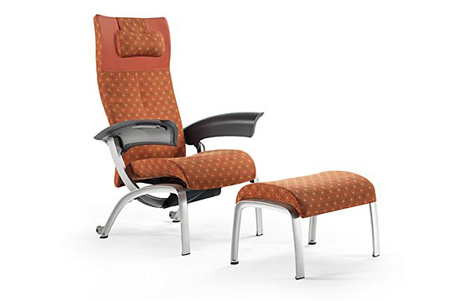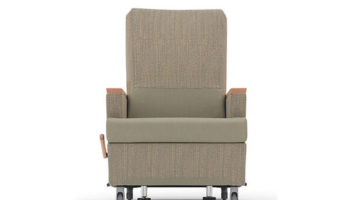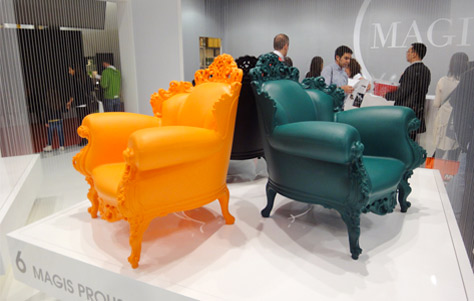Nala Patient Chairs by Brandrud/Herman Miller
When Herman Miller produces seating for the healthcare market, they think of everything (as with their other product lines). The Brandrud Collection includes seating for patient rooms, waiting areas, and lobbies, as well as other pieces for hospital and medical settings. One of the Brandrud pieces most likely to please those in need of healing is the Nala Patient Chair. Designed to dramatically improve a patient’s healthcare experience, Nala combines good design with ergonomic principles and high-performance fabrics.
Nala Patient Chair. Manufactured by Brandrud/Herman Miller.
Fixed Back and Harmonic Tilt Patient Chair

Nala is available as a Fixed Back or Harmonic Tilt model, which enables caregivers to access the patient and allows patients to move with little effort. In all positions, the Nala Harmonic Tilt gives patients the support they need, “regardless of the weight of the patient.” The Fixed Back version has rear casters, so caregivers can move the patient with ease. With a 15 degree back angle and an optional nine-inch headrest, the Nala Fixed Back cradles the patient’s head and body. Additionally, Nala offers an ottoman that supports up to 350 pounds—great “to use as a seat for guests or family.”

Due to the demanding needs of healthcare environments, the Nala Chair comes upholstered in high-performance fabrics that are durable, antimicrobial, moisture-repellent, and easily cleaned. Even so, the fabrics look and feel appealing and stylish: “they don’t have an institutional look.” And since seat and back upholstery are designed to be field replaceable, Nala Chairs can be given a fresh, new look in the future.
About the Manufacturer: Brandrud is a Herman Miller brand based in Seattle that focuses on furniture for the healthcare market. The Brandrud Collection is offered by Nemschoff, another Herman Miller brand, and includes seating for patient rooms, patient treatment areas, and public spaces like lobbies and waiting areas, as well as armoires, display cabinets, dressers, and bedside tables.




Leave a Reply